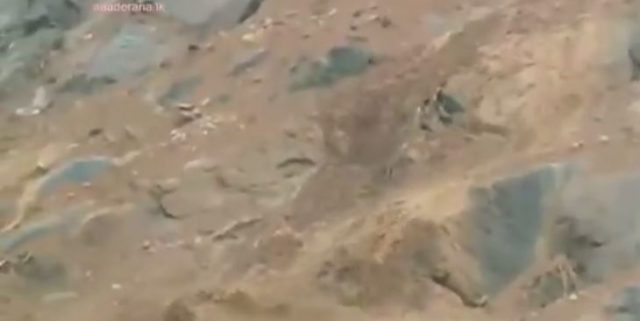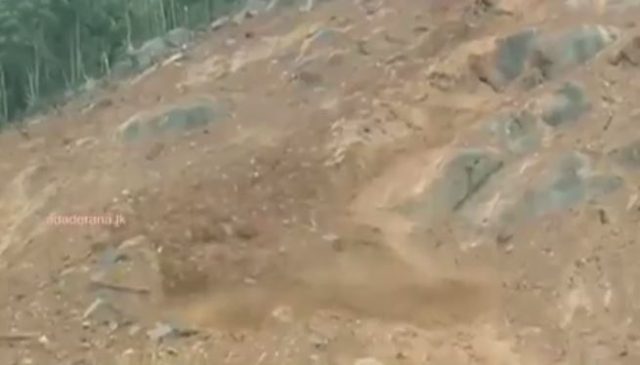21 May 2016
New landslide video: the mobility of the Aranayake landslide
Posted by Dave Petley
The mobility of the Aranayake landslide
An technically interesting aspect of the Aranayake landslide tragedy in Sri Lanka is the high levels of mobility that the debris has obviously shown. It is this mobility that has allowed the debris to travel so far, and of course so fast, which in combination is the reasons for so many fatalities. A video has been posted on Youtube showing a very small secondary failure of the landslide mass:
.
This failure is only a few cubic metres, a minute fraction of the devastating landslide of earlier this week. But its behaviour illustrates the problem beautifully. At the start of the video the failure is clearly just a standard small-scale landslide:

Still from a Youtube video of a secondary failure at the Aranayake landslide site
.
However, this quickly transitions into a highly fluid, very mobile mass:

A still from the Aranyake landslide video showing the highly mobile landslide mass
.
One can only imagine what this must have looked like when the whole slope was on the move.
The Sri Lankan army today ceased its operations to rescue landslide victims, and instead turned to a recovery and relief mission. However, in a deeply surreal move, Nepal has reportedly donated $100,000 dollars towards “relief operations in the disaster zones”. Whilst the desire to assist a neighbour in distress is commendable, Nepal has many, many people living in the aftermath of an earthquake without any tangible assistance, and with the monsoon looming. There is reportedly a huge amount of unspent relief money, intended to assist the victims of the earthquake, so far unspent. This must surely be the priority for Nepal? Whilst the Aranayake landslide, and associated damage, is a disaster in Sri Lanka, the impacts are a fraction of those in the rural areas of Nepal. This should be the priority for the Nepal Government.


 Dave Petley is the Vice-Chancellor of the University of Hull in the United Kingdom. His blog provides commentary and analysis of landslide events occurring worldwide, including the landslides themselves, latest research, and conferences and meetings.
Dave Petley is the Vice-Chancellor of the University of Hull in the United Kingdom. His blog provides commentary and analysis of landslide events occurring worldwide, including the landslides themselves, latest research, and conferences and meetings.